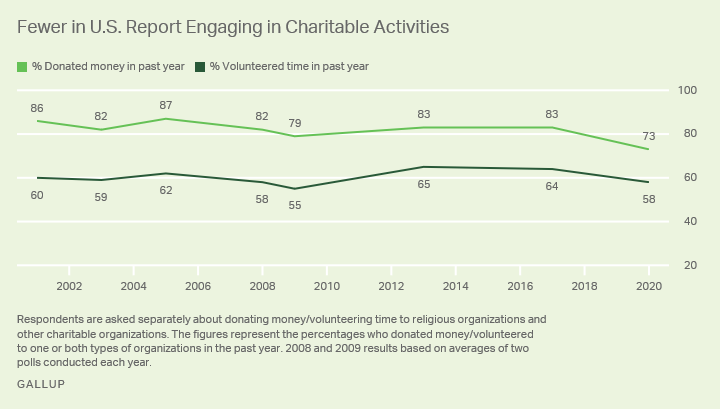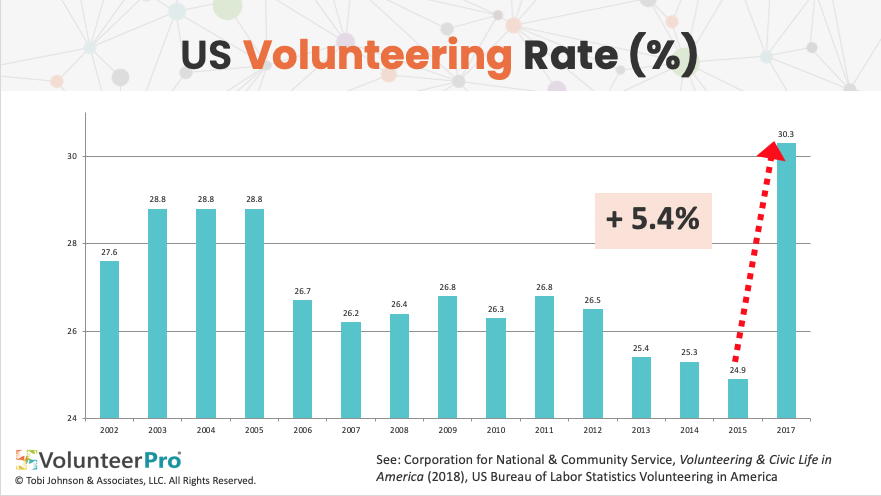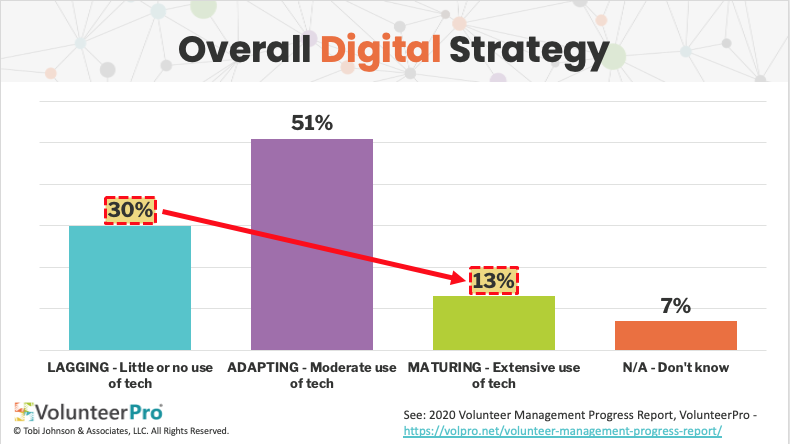 How to Survive the 2020 Nonprofit Recession
How to Survive the 2020 Nonprofit Recession
As national employment rates rise at an alarming rate due to the impact of the Coronavirus pandemic – and nonprofit workers find themselves furloughed or worse – it may be time to re-consider how we prepare for a possible nonprofit recession.
In case you’re wondering if unemployment is really all that bad. Rest assured. It is.
The US Bureau of Labor Statistics reports that “In April, the unemployment rate increased by 10.3 percentage points to 14.7 percent. This is the highest rate and the largest over-the-month increase in the history of the series (seasonally adjusted data are available back to January 1948).”
CNN reports that one in four Americans have filed for unemployment, and they note that “Next week’s jobs report is expected to show an unemployment rate of nearly 20%, up from 14.7% in April.”
At the same time, in March the CARES Act was passed, a $2 trillion stimulus package focused on providing immediate relief for individuals, nonprofits, businesses, and state and local governments.
As part of the package, nonprofits are eligible for Paycheck Protection Program Loans (PPP) loans that will be forgiven if staff remain employed, Economic Injury Disaster Loans (EIDL), and an Employee Retention Payroll Tax Credit.
In addition, expanded unemployment insurance (an increase of $600 per week) is available for workers who are furloughed. But in the face of an unprecedented surge of claims and long wait times, some assert that the unemployment system is broken.
So, at this point it’s not clear how nonprofits will fare in the coming months.
How is Charitable Giving Impacted by a Recession?
While the current unemployment numbers are indeed concerning, how does a recession impact the overall sustainability of the nonprofit sector as a whole?
Past experience is a good indicator of the future.
According to Gallup, individual giving dipped to 79% during the 2008 Great Recession, down only 1% from a customary 80% of US adults reporting financial donations to causes year over year.
In addition, with respect to the recent history of nonprofit employment growth and recessions the Nonprofit Quarterly reports, “Nonprofits have also outpaced for-profits in employment growth. From 2007 to 2016, the number of employees in nonprofit firms increased 16.7 percent, while employment in for-profit firms rose only 4.6 percent. A key difference is that nonprofits are less impacted by recessions than for-profit firms—that famed nonprofit resiliency rises again.”
While these may be good signs, changes to giving trends may be afoot due to the current pandemic.
Despite a Charitable Giving Incentive included in the CARES Act, which offers new universal deduction for 2020 charitable contributions of up to $300, incentives may not be resulting in the intended effect.
Reporting from the Nonprofit Times notes that “Some 73% of U.S. adults say they donated money to a charitable organization during the past year, surpassing the prior low from the Great Recession era.”
While this percentage is 6% lower than the previous recession, it is also possible that survey respondents are more focused on the last few months than the past year and that this percentage may rise as the public returns to work.
Furthermore, even in the midst of a pandemic, the public has shown the capacity to support nonprofits with a recent poll noting that nearly one third (29%) of community members have donated or volunteered for COVID-19 relief efforts.
Gallup Charitable Giving Polls (most recent: April 14-28, 2020)

Source: Gallup, Percentage of Americans Donating to Charity at New Low (May 14, 2020)
However, while charitable donations are down overall, the intent to give remains.
The Nonprofit Times reports that “The majority of Americans, 66%, say they do not plan to change the amount they give to charity in the coming year. However, more say they plan to increase (25%) rather than decrease (7%) their charitable contributions. Four in 10 upper-income Americans plan to increase their charitable contributions in the next year, as do 23% of middle-income Americans. Lower-income Americans are about as likely to say they will decrease their charitable donations (13%) as to say they will increase them (17%).”
What About Volunteerism?
During the past economic downturn in 2008, Gallup reported a 58% volunteering rate in US adults, which dropped to 55% in 2009 during the last Great Recession.
But while many nonprofits appear to have a plan to pivot to virtual work, volunteer rates have indeed dropped. This may be because volunteer opportunities are not available or because volunteers don’t feel comfortable or safe. It could be a combination of both.
In response to a survey conducted in March, Nonprofit HR reports that “Sixty six percent of new pulse survey respondents said their social impact organizations are ready to go virtual and can accommodate an all-virtual workforce should their city/state or region be quarantined.” What’s not clear is whether this extends to volunteer involvement.
In their most recent survey, Gallup reports that 58% of respondents reported volunteering in the past 12 months, down 7% from an all-time high of 65% in 2013.
While volunteering rates differ slightly based on who is reporting them, most statistics agree that we have experienced higher rates of serve in the past few years.
US Volunteering Rates Over Time

Sources: Corporation for National & Community Service, Volunteering in America and US Bureau of Labor Statistics
The Nonprofit Times reports that volunteer rates amongst middle-income Americans in the past 12 months are most pronounced (declining from 71% in 2017 to 58% today) while lower-income Americans show only a slight decline (from 49% in 2017 to 44%). And, there has been little change upper-income volunteering reporting they volunteered time (76% in 2017 and 75%).
It will remain to be seen whether these volunteering trends continue. There are limitations to the data to be sure.
Gallup reports that there has been evidence of seasonal fluctuations in survey response data and they suggest that some respondents may be focused on their current charitable activities rather than what they’ve done over the past year.
Nonprofit Resilience in the 2020 Recession
Whatever the future may bring, it makes good sense for nonprofits and public sector organizations to prepare for a “new normal” so they do not lose the invaluable social capital their supporters bring to the table.
What might this entail?
No doubt it will include a shift in the use of digital technology to reach supporters.
There has been a boom in the online learning space as those stuck at home seek to continue to progress even in a pandemic.
During coaching calls and in our discussion forums, VolunteerPro Premium Community members report that they are transitioning volunteer projects online. In our weekly Facebook Live mini-trainings and Insiders Group on Facebook discussions abound around how to better stay connected and meet the needs of volunteers in an online space.
However, the existing digital maturity of many volunteer organizations is no doubt hindering a smooth transition online. Apparently, many were woefully unprepared for this moment, particularly when it comes to working with volunteers remotely.
In our recent 2020 Volunteer Management Progress Report survey, we asked volunteer managers to rate their agency’s digital maturity as it relates to volunteer management.
Only one in ten (13%) rated their agency as Mature. Half (51%) reported that their overall digital strategy was in the Adapting stage with moderate technology use to meet goals. About one-third (30%) reported they were Lagging. Finally, another 7% did not feel competent to rate their own agency’s use of technology to engage volunteers.
How Leaders of Volunteers Rate their Digital Strategy

Source: VolunteerPro, 2020 Volunteer Management Progress Report
In addition, traditional volunteer roles are often more suited to in-person or direct service work.
In the absence of more creative solutions to community engagement, many organizations have pushed the pause button on their volunteer activities even when volunteers want to serve.
In a March 24 webinar, VolunteerMatch presented promising research on volunteer’s motives and concern. According to their polling for socially responsive companies and their user base of volunteers they found that:
- 30% of companies are interested in doing more volunteering and making more charitable contributions than usual
- 85% of volunteers are afraid of exposure to illness or transmitting it to others
- 50% want to help in person (if there are creative ways to still stay safe)
- 45% are interested in volunteering online
So, it appears that the will to support the community may be alive and well, albeit tempered by the dangers of Coronavirus transmission. In addition, while nonprofits have been hesitant to embrace the concept of online volunteering in the past, volunteers are ready and willing to take it on in the present.
Building a Sustainable Eco-system of Community Support
So, what will it take to survive the current recession?
Continuing to innovate around supporter roles and engagement is a good start.
Certainly, the role of volunteers as ambassadors to promote individual giving will continue to be an important role in nonprofit sustainability.
In addition, skilled volunteer projects are on the rise, and some nonprofits have adapted quickly to capture the unique skill set of professionals who are ready to serve in short and more intensive capacities.
In fact, Catchafire reports a 48% increase in under-resourced nonprofits and charities seeking virtual volunteers and a 200% increase in tech calls supporting online fundraising, virtual programming, and operations since social distancing.
But I believe charities can do more to stay on their feet and survive the 2020 Recession.
I believe robust community engagement (even from home) will be the secret to our success as a sector. Our ability to form and maintain an eco-system of support made up of both volunteers and donors will become our safety nets during this crisis.
But only if we invest the time and energy in fostering and supporting this kind of integrated community.
I’ve written about shifting our thinking about volunteers as human resources to appreciating their unique role as community catalysts. I argue that when we think of volunteers as catalysts versus simply human resources, we also transform how we think about their potential for impact.
Social science researchers have also noted that, if given the proper environment, nonprofits can extend the roles of volunteers beyond unpaid labor to catalysts for innovation. Further, they argue that specific organizational factors that can either help or hinder volunteer contributions to social innovation, or new solutions that meet a social need.
I’ve also written about the arbitrary distinctions the nonprofits sector makes between donors and volunteers, treating them (and resourcing those who engage and support them) very differently, and often inequitably, as some research shows.
The facts are that volunteers are donors and donors are volunteers – so the integration I’m speaking already exists.
Consider the following:
According to an early study by Fidelity® Charitable Gift Fund and VolunteerMatch, two-thirds (67%) of Americans generally make their financial contributions to the same organizations where they volunteer.
What’s more, those same active volunteers say they are more likely to increase their donations compared to non-volunteers.
A more recent study of Fidelity® Charitable Gift Fund donors found that 87% of volunteers they surveyed reported an overlap between their volunteer and financial support. Half (50%) said they give more financial support because they volunteer.
As we move through the current pandemic, the nonprofits that thrive will be able to pivot their thinking around how they define and treat supporters.
Rather than pushing the pause button on supporter engagement and support, now is the time to keep them close.
When it comes to donors, offering diversified ways to support your causes across the spectrum of time, treasure, and talent ensures that everyone can still be part of your mission regardless of their current financial circumstances.
In the case of volunteers, those who are engaged in meaningful service and understand your mission to its core will be the most likely to be ready to contribute funds when it is needed.
So, it’s now or never.
Breaking down the walls between volunteers and donors – and increasing your nonprofit’s resources, support, and strategy for effectively engaging both – will be essential to your ability to build a flexible and sustainable eco-system upon which to tap resources, both human and financial.
At minimum, nonprofits should have a clear understanding of the dynamic relationships at play between those who contribute financially and those who contribute time and talent in their own organizations.
Now, more than ever, supporters will be crossing the thresholds between giving and volunteering. It’s time for organizations to have a coordinated approach to both and to resource and support both development and volunteer management staff adequately.
Investment today will bear fruit tomorrow in the form of ongoing organizational sustainability.
The more your supporters know you still have them in mind and are ready to support them as partners in your mission, the more they’ll be ready to answer the call when you need them most.
By investing in your most important asset – your people – your organization can and will survive the 2020 nonprofit recession and perhaps even emerge stronger than ever.








Leave A Comment